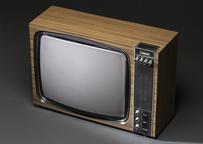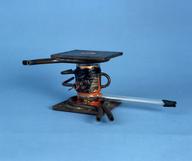

Ekco AD36 radio receiver in phenolic plastic case, 1935
- Made:
- 1935 in Southend-on-Sea
- maker:
- E K Cole Limited

Model AD36 Ekco radio receiver, 4-valve TRF domestic receiver in circular Bakelite phenolic plastic case, by E K Cole Limited, Southend-on-Sea; England, 1935
The EKCO AD65 broadcast radio receiver was an iconic Art Design and is one of the most recognisable forms of the Art Deco-style ‘round radio’ design from the 1920s and 1930s, made possible through the use of Bakelite, the first plastic to be used for radio cases. When combined with a wood flour filler, phenol formaldehyde, known by its trade name 'Bakelite' after its inventor Leo Baekeland, formed a useful mouldable plastic, with very good electrical insulating properties.
The EKCO AD65 radio was a four-valve TRF (Tuned Radio Frequency) domestic receiver in a circular Bakelite case. TRF radios were usually battery powered, and as the batteries were costly, the radio was normally only turned on to listen to a specific programme. Tuning was a complicated process, so much so that listeners were advised to switch their sets on 10 or 20 minutes before the programme started to allow sufficient time to tune in.
Details
- Category:
- Radio Communication
- Object Number:
- 1990-7/1
- Materials:
- brass (copper, zinc alloy), celluloid (cellulose), copper (metal), electronic components, fibreboard, glass, phenol formaldehyde (Bakelite) and steel (metal)
- Measurements:
-
overall: 370 mm x 370 mm x 190 mm, Wt. 6.024kg
- type:
- radio receiver
- credit:
- Peverett, A.




